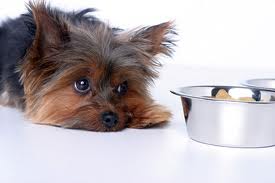Does Your Animal Have Gastrointestinal Problems?
 One of the top reasons why veterinarians see pets is because of gastrointestinal problems according to the Veterinary Pet Insurance Company. There are many choices when it comes to feeding your pet, so naturally veterinarians are asked to give recommendations about what food is best for their pets. Some owners fail to recognize that bad pet food can be detrimental to their pet, nor do they realize that good pet food and feeding tendencies can be beneficial to their pet.
One of the top reasons why veterinarians see pets is because of gastrointestinal problems according to the Veterinary Pet Insurance Company. There are many choices when it comes to feeding your pet, so naturally veterinarians are asked to give recommendations about what food is best for their pets. Some owners fail to recognize that bad pet food can be detrimental to their pet, nor do they realize that good pet food and feeding tendencies can be beneficial to their pet.
The most common conditions seen associated with GI tract disease are pancreatitis malabsorption syndromes, protein-losing enteropathies, inflammatory bowel disease, and food allergy. These conditions can benefit from the proper pet food. This key to this is proper education from your veterinarian and their team to counter some of the mistaken beliefs about feeding their pets. There are five myths about the pet’s diet and GI disease.
Many people love to feed their dogs, but many people foods are just to fatty. Table scraps can lead to obesity and some GI diseases like pancreatitis. The pancreatitis can flare up leading to discomfort and can be life threatening.
Myth: The fat content of a food is not a concern because dogs need calories to maintain a high energy level.
Myth: Most treats are just fine to give to a dog or cat.
Myth: Dogs and cats need variety in their diets and I can buy whatever is on sale that week.
Myth: I can feed the same food throughout the animal’s life.
